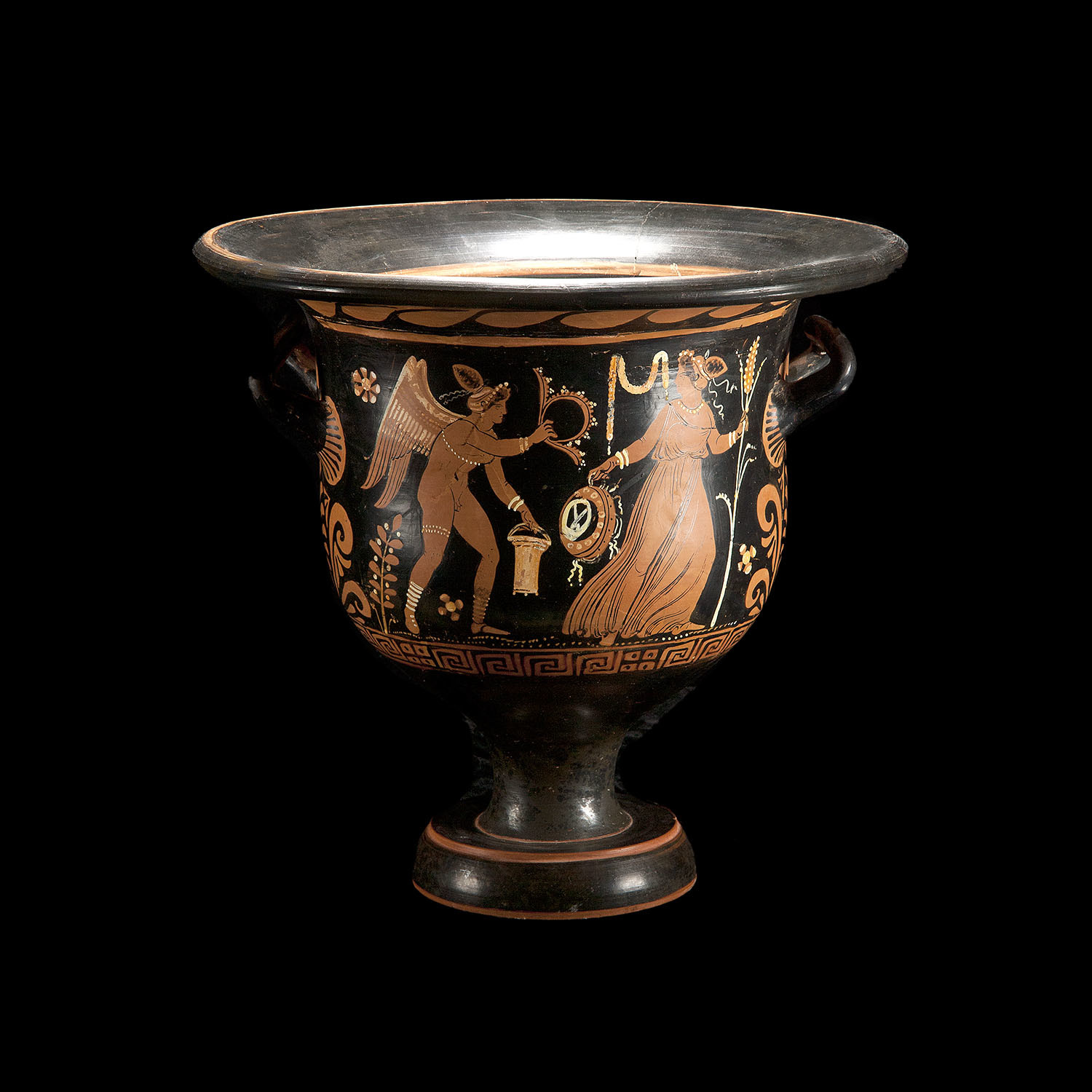Greetings again Free and Mister E,
No, I didn't read it. It is much too long. The context of Ex. 3:14 fully supports the translation "I Am."
I was hoping that you would have read Post #1 in that thread titled "
The Yahweh Name Part 1 Initial Declaration and Fulfilment", especially my reference to Exodus 6:1-8 which to me locks in both the context and the translation "i will be". It appears that to maintain my position I will need to repeat here in this thread what I said on Exodus 6:1-8 and expand and clarify this.
In my teenage years we had two youth leaders and we attended a Study Weekend in the mountains conducted by one of these, upon the subject of God Manifestation and the Yahweh Name. As usual I gained some understanding of the subject in general, but on another occasion this youth leader asked me to consider Exodus 6:1-8 and this helped me lock in the context of the Name and the meaning "I will be". I was hoping that a personal consideration of these verses would be more beneficial than my attempts at explanation, but I see the need to give a detailed explanation. That interest in the subject was awakened over 60 years ago, and I am now 81 y.o. and consider this subject as one of my favourites. This interest has been sustained over the years and I could add relevant detail of some of the help I have received from other sources and encounters coupled with my personal study. That weekend is also etched into my memory as it was the start of my four years courtship of Joyce and we have been married now for 57 years.
Exodus 3 introduces Moses at the burning bush, but Stephen recounts Moses’ thoughts 40 years earlier. It would be beneficial to read the whole section, but the following may be sufficient:
Acts 7:17,25 (KJV): 17 But when the time of the promise drew nigh, which God had sworn to Abraham, the people grew and multiplied in Egypt, 25 For he supposed his brethren would have understood how that God by his hand would deliver them: but they understood not.
Moses was conscious of the promise to Abraham that the children of Israel would be delivered from Egypt and brought into the Land of Promise. But now 40 years later his involvement in this process seemed to be impossible. Moses would be still conscious of the promise when the Angel of Yahweh in the bush speaking on behalf of Yahweh announced “I am the God of Abraham”.
The Angel then proceeds to reveal that Moses was to be sent to Egypt to deliver Israel out of Egypt.
Exodus 3:7–10 (KJV): 7 And the LORD said, I have surely seen the affliction of my people which are in Egypt, and have heard their cry by reason of their taskmasters; for I know their sorrows; 8 And I am come down to deliver them out of the hand of the Egyptians, and to bring them up out of that land unto a good land and a large, unto a land flowing with milk and honey; unto the place of the Canaanites, and the Hittites, and the Amorites, and the Perizzites, and the Hivites, and the Jebusites. 9 Now therefore, behold, the cry of the children of Israel is come unto me: and I have also seen the oppression wherewith the Egyptians oppress them. 10 Come now therefore, and I will send thee unto Pharaoh, that thou mayest bring forth my people the children of Israel out of Egypt.
Yahweh was to deliver Israel out of Egypt by the hand of Moses, and despite Moses’ reservations, Yahweh would be with Moses to accomplish this task.
Exodus 3:11–12 (KJV): 11 And Moses said unto God, Who am I, that I should go unto Pharaoh, and that I should bring forth the children of Israel out of Egypt? 12 And he said, Certainly I will be with thee; and this shall be a token unto thee, that I have sent thee: When thou hast brought forth the people out of Egypt, ye shall serve God upon this mountain.
Please note that the phrase translated “I will be” in verse 12 is in the future tense and is identical with the same as in Exodus 3:14:
Exodus 3:14 (KJV adjusted): And God said unto Moses, I WILL BE THAT I WILL BE: and he said, Thus shalt thou say unto the children of Israel, I WILL BE hath sent me unto you.
Now there are at least two Hebrew words translated by the English word “God”, and one of these “Elohim” occurs in Exodus 3:6 where the Angel says “I am the God (Elohim) of Abraham”. Abraham himself uses the other “El” in the following after God delivered Lot by the hand of Abraham and his confederates:
Genesis 14:18–22 (KJV): 18 And Melchizedek king of Salem brought forth bread and wine: and he was the priest of the most high God. 19 And he blessed him, and said, Blessed be Abram of the most high God, possessor of heaven and earth: 20 And blessed be the most high God, which hath delivered thine enemies into thy hand. And he gave him tithes of all. 21 And the king of Sodom said unto Abram, Give me the persons, and take the goods to thyself. 22 And Abram said to the king of Sodom, I have lift up mine hand unto the LORD, the most high God, the possessor of heaven and earth,
In each of the above the word translated “God” is the Hebrew word “El.”
"I Am," on the other hand, tells us that God is self-existent and timeless. As such, he is sovereign, omnipotent, omniscient, and unchanging. This is a much stronger translation.
Could I ask, in the context of Exodus 3: What extra information does "I AM" convey to Moses which he did not already know, and what is difference or additional information to the "God" of Abraham whether it is "Elohim" or "El" or "the Most High El"?
When the initial contact that Moses had with Pharaoh did not have initial success, and the people started to complain, God answered with the following:
Exodus 6:1-8 (KJV): 1 Then the LORD said unto Moses, Now shalt thou see what I will do to Pharaoh: for with a strong hand shall he let them go, and with a strong hand shall he drive them out of his land. 2 And God spake unto Moses, and said unto him, I am the LORD: 3 And I appeared unto Abraham, unto Isaac, and unto Jacob, by the name of God Almighty, but by my name JEHOVAH (or Yahweh) was I not known to them. 4 And I have also established my covenant with them, to give them the land of Canaan, the land of their pilgrimage, wherein they were strangers. 5 And I have also heard the groaning of the children of Israel, whom the Egyptians keep in bondage; and I have remembered my covenant. 6 Wherefore say unto the children of Israel, I am the LORD, and I will bring you out from under the burdens of the Egyptians, and I will rid you out of their bondage, and I will redeem you with a stretched out arm, and with great judgments: 7 And I will take you to me for a people, and I will be to you a God: and ye shall know that I am the LORD your God, which bringeth you out from under the burdens of the Egyptians. 8 And I will bring you in unto the land, concerning the which I did swear to give it to Abraham, to Isaac, and to Jacob; and I will give it you for an heritage: I am the LORD.
Abraham knew Elohim, and El, and even El Almighty, but here the future tense and future activity was to be God acting to deliver Israel out of Egypt, “I will be with thee”, so that Israel would become a reflection of what God's Name has accomplished.
Some commentators argue for a future tense translation, “I will be who I will be,” because the verb has an active quality about it, and the Israelites lived in the light of the promises for the future.
Yes.
Kind regards
Trevor




